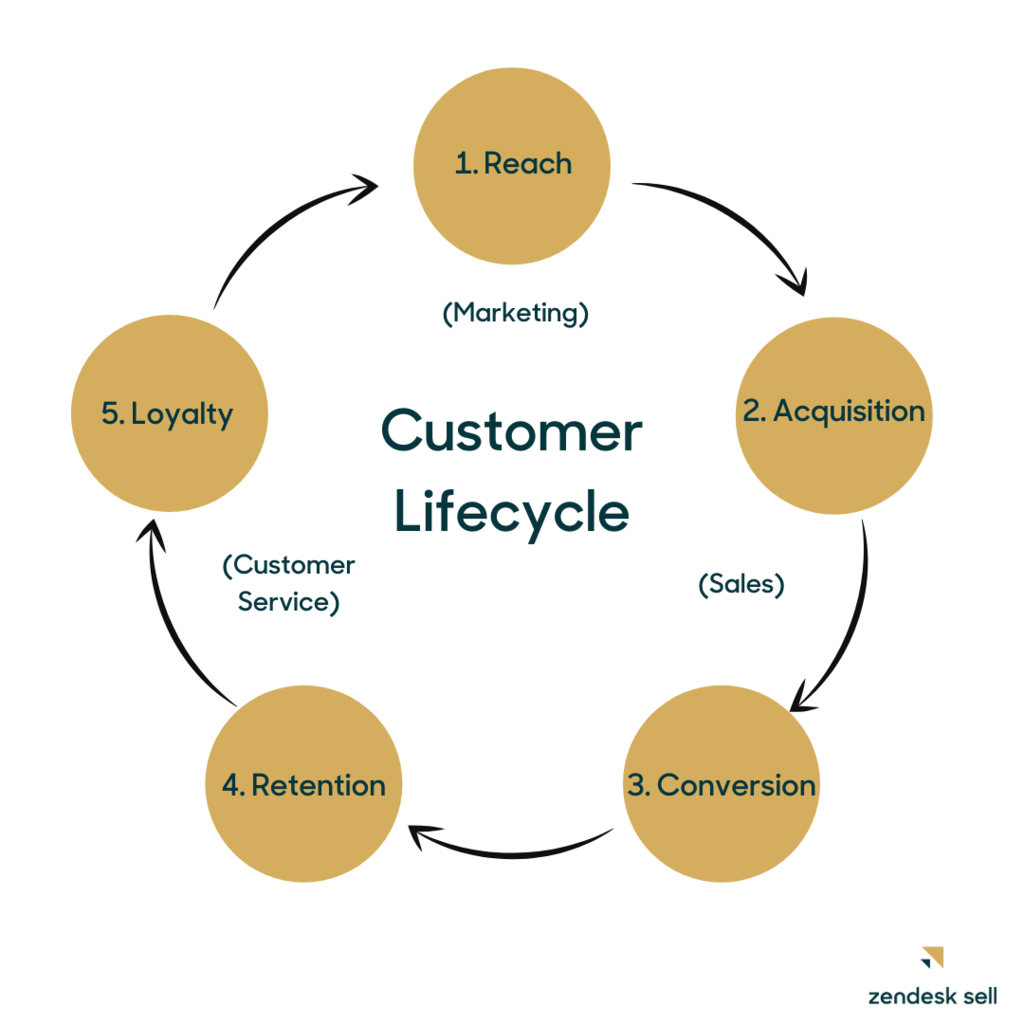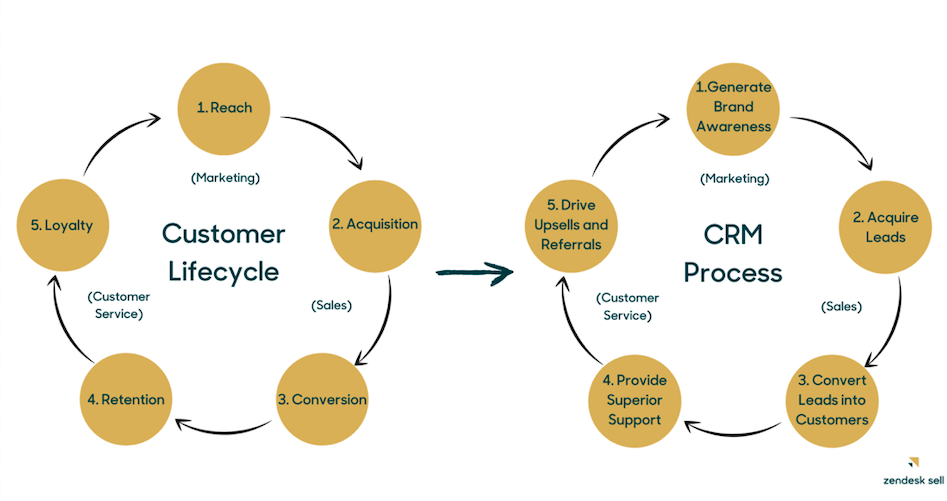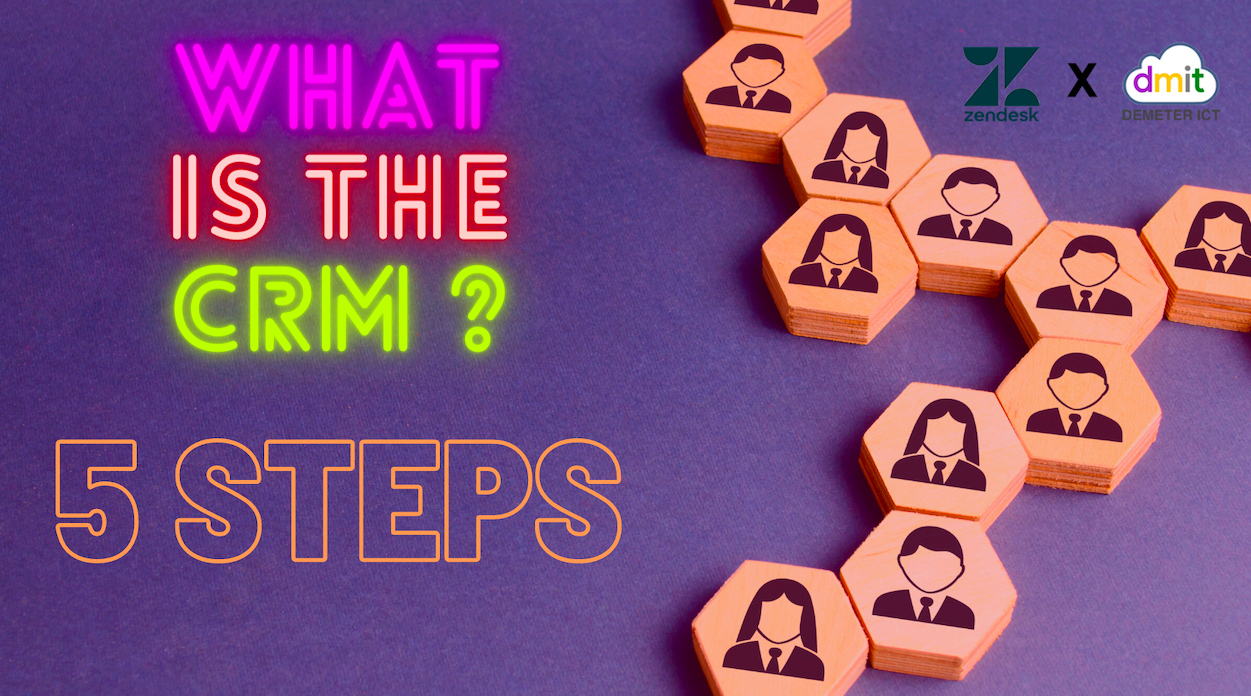The CRM process is a strategy for keeping every customer interaction personalised and meaningful that consists of five main steps.
Consumers today expect a personalised customer experience catering to them as individuals. In order to meet these expectations, you have to understand what your audience wants and needs, and you must understand how to deliver on these requirements better than your competition.
The CRM process helps your organisation achieve these goals.

What is the CRM process?
The CRM process is a strategy for keeping every customer interaction personalised and meaningful that consists of five main steps. A customer relationship management system (CRM system) provides the data and functionalities your team needs to execute this strategy and ultimately turn leads into customers.
What is the CRM process cycle?
The CRM cycle involves marketing, customer service and sales activities. It starts with outreach and customer acquisition and ideally leads to customer loyalty.
There are five key stages in the CRM cycle:

The CRM process is that concept in action. It is the tangible steps an organisation must take to help drive consumers through the cycle of learning about your brand and ultimately becoming repeat customers.

According to the customer lifecycle, the first step in the CRM process is maximising reach with leads. In practice, reach is using your CRM to generate brand awareness via targeted marketing campaigns.
Every stage in the customer lifecycle corresponds with an actionable step in the CRM process. The key is knowing what those steps are and how to execute them.
What are the 5 steps in the CRM process?
The five steps of the CRM process are a collaborative effort between marketing, sales and support departments. To help you understand how each team works together, let’s go through how each step works in practice.
- Generate brand awareness
The first step to acquiring new customers is introducing them to your business. The marketing team generally takes on this task using a number of measures:
- Learning about your target audience.
- Segmenting your target audience.
- Creating marketing campaigns that speak to those target demographics.
When it comes to completing these steps, CRM software contains a wealth of information. The tool can show patterns in past leads and customers to give marketing teams a clear picture of their target audience.
2. Acquire leads
Introducing your brand to a potential customer is just the beginning of the CRM process. From there, you have to encourage them to learn more about your business and engage with it.
Depending on how your company is structured, this lead-acquisition step could be a marketing or sales team responsibility. Your marketing team, for example, might encourage website visitors to share their email with a newsletter. On the other hand, the sales team could use their CRM system to set up a live chat on your site. With this feature, your team can proactively contact potential customers who land on your website.
3. Convert leads into customers
You have successfully engaged with your leads, and they are interested. Now it is time to turn those leads into customers.
To do so, sales reps must first be skilled at identifying how interested leads are and, specifically, whether they are interested enough to make a purchase. A CRM system is very helpful here. The historical data from past successful sales can be used to identify lead-qualification criteria. These criteria can be added as ‘attributes’ to your CRM’s lead-scoring tool to help reps identify opportunities with the highest probability of a sale.
4. Provide superior customer service
You have successfully converted your lead into a customer. Great! But the CRM process does not end when a customer converts. In order to grow as a company, you need to retain customers. How do you keep the customer coming back? Excellent service from support.
According to Zendesk’s 2020 Customer Experience Trends Report, customer service is the biggest factor that determines a consumer’s loyalty to a brand. Conversely, poor customer service can cost you customers and have a negative impact on your reputation. Support teams must be able to deliver superior support whenever, wherever and however their customers expect it.
5. Drive upsells
When we think of a returning customer, we imagine a shopper continually coming back to the same business to buy the products they know and love. But there is another key way in which existing customers provide value – by upgrading to the most expensive products.
How do you convince customers to switch products?
You can start with personalised recommendations via email by using your CRM to organise customers into smart lists based on similar purchase histories. You can then create custom email templates that send relevant product releases to entire lists of customers at once. In this way, you can be sure that the promotional deals or releases you send are reaching the people most likely to buy them.
With a CRM process, the customer life cycle no longer feels abstract. The right CRM enables you to create a deliberate, personalised experience that naturally drives leads through your sales pipeline.
Create a better customer experience with the CRM process
The five-step CRM process is a strategy for delivering a wonderful experience throughout every stage of the customer journey. And with all of the customer data you need, a CRM tool makes it possible to execute this process. This personalised experience makes your customers feel that you are on their side, no matter what.
By Liz Coffman
Data source : Zendesk Blog
Learn more about Customer Relationship Management
- For more information, Zendesk prices with special promotions, call 02 030 0066.
- support@demeterict.com




